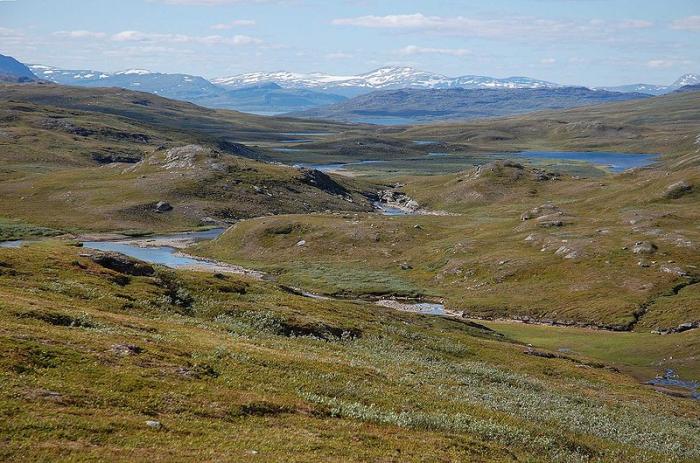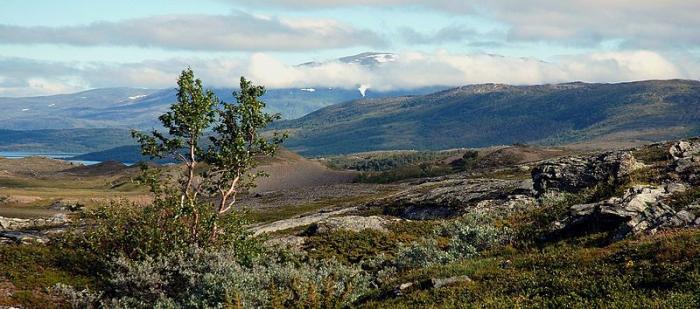Padjelanta is a national park in Norrbotten County in northern Sweden. Established in 1963, it is the largest national park in Sweden with an area of 1,984 km², and part of the UNESCO World Heritage Site Laponia established in 1996.
Nature
The park, which borders on Norway in the west, is primarily comprised by a vast plateau around the two unusually large lakes Vastenjavrre and Virihavrre – the latter of which is often referred to as "the most beautiful lake in Sweden". Consequently, the landscape is fairly flat and open, especially compared to the alpine Sarek National Park on its eastern border, and mainly consists of rolling hills with few peaks of the higher variety.
Plants
Most of the park is situated above the tree line; meaning few species of trees can survive the harsh climate of the park. The exposure of strong winds and the cold winters has made it so that the only tree that can exist in any relevant numbers is the small and robust Betula pubescens subsp. These form a small forest (1,400 ha) in the northeast corner of the park. The diversity of the flora is extremely high, nonetheless over 400 different lower plant species have been cataloged in the area, which reportedly is a record in the Swedish fells (highlands).
Animals
Padjelelanta hosts a very limited number of mammals, with a low variety of different species, almost all of which have small populations. The mammals that do exist are mostly lemmings and reindeer, as well as the predators that eat them, in this case the wolverine and the Arctic fox, respectively, both being permanently resident in the park.
Padjelanta's bird-life however is very rich and showcases most species associated with the Swedish bare mountain fell – and fell lake regions. The most typical species on the heath are European golden plover, meadow pipit and northern wheatear but rock ptarmigan, Eurasian dotterel and whimbrel are also fairly common sights.
In and around the lakes there are plenty of Anatinae, such as long-tailed duck, Eurasian teal and common scoter as well as many waders, which include red-necked phalarope, ruff, Temminck's stint and common redshank.
The northeast forest is also home to a great variety of species and contains an abundance of common redpoll, willow warbler, Lapland longspur, bluethroat and redwing.
Then there are also many birds that are not really constricted to one area but is spread throughout the park. This include lesser white-fronted goose, gyrfalcon, golden eagle, white-tailed eagle, great snipe, rough-legged buzzard and long-tailed jaeger. During lemming-years you can even see the snowy owl which is otherwise rare seen in Padjelanta.
The park also contains a rich quantity of fish, Vastenjavrre and Virihavrre being especially densely populated.
History
Padjelanta, due to its flourishing meadows and fish filled lakes has long been attractive to humans and the park has been inhabited ever since the Stone Age(one evidence of this being the many trapping pits that have been found and dated back to this period of time). Even today the lakes are utilized for fishing by the Sámi villages. Ever since the birth of modern science the area has also been interesting for scientists, mainly for studying its flora, fauna and geology.




